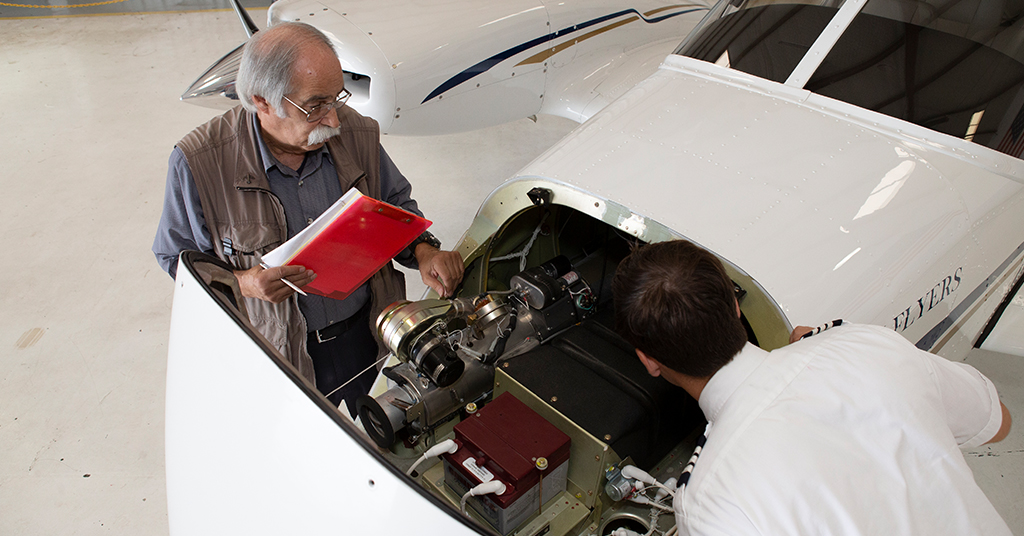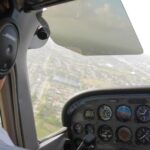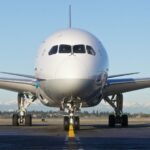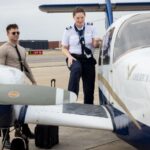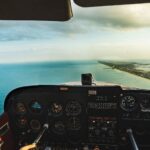By Steven Daun, National Chief Pilot
Airworthy… We hear the term every day in aviation, but what does it really mean to pilots? Who is responsible for determining if an aircraft is airworthy? How do we determine if an aircraft is airworthy? An aircraft that is “flyable” is not necessarily “airworthy” and whether you are an owner, renter, or student working on your next rating, you might be surprised where the responsibility falls for determining the airworthiness of the aircraft you operate.
Many pilots expect that airworthiness is one of those things that only mechanics deal with and is ultimately the mechanic’s responsibility, but the FAA is very clear about where the responsibility falls for determining an aircraft’s airworthiness before flight and if you’re the pilot in command, it is up to you!
14 CFR 91.7 makes it very clear that only airworthy aircraft can be operated in the statement, “No person may operate a civil aircraft unless it is in an airworthy condition.” The regulation then spells out who must make this determination by stating, “The pilot in command of a civil aircraft is responsible for determining whether that aircraft is in condition for safe flight, the pilot in command shall discontinue the flight when unairworthy mechanical, electrical, or structural conditions occur.”
The FAA also states that for an aircraft to be airworthy, it must conform to its type certificate, including any alterations and airworthiness directives, and must be in condition for safe operation. It is important to note that the responsibility for determining airworthiness does not stop here. 14 CFR 91.407 places additional responsibility on the owner/operator by stating, “No person may operate an aircraft that has undergone maintenance, preventative maintenance, rebuilding, or alteration unless: (1) It has been approved for return to service by a person authorized under 43.7 of this chapter; and (2) The maintenance record entry required by 43.9 or 43.11, as applicable, of this chapter, has been made.”
Part 91 is an “operational-based” section, unlike Part 43, which is a “maintenance-based” section. The difference between these parts is important to understand because they explain the responsibilities of both the pilot and mechanic as related to airworthiness. If a mechanic performed an unairworthy repair on an aircraft and signed it off as required by 43.9, and the aircraft never flew, an FAA inspector can write a violation against him for the bad repair. In order for a pilot to get a violation written against them for not complying with a part 91 rule, the aircraft would have to be flown for the violation to happen.
While the mechanic is responsible for making sure that the work they perform is correct and within the requirements for the work that they are performing, you as the pilot of that aircraft are the one that is ultimately responsible for ensuring that all of the required maintenance on the aircraft has been addressed properly before flight. Many owners and operators are taking a serious gamble by not checking for proper log entries before flying an aircraft. This oversight can have serious consequences that can quickly result in multiple violations and safety consequences.
Most pilots understand the importance of a walk around pre-flight inspection of the airplane to check for any obvious mechanical problems, it is not the only factor in determining airworthiness. If you are planning to operate any aircraft, remember to review the logbooks before the flight and anytime the aircraft is returned from maintenance. You need to ensure that the proper inspections, repairs, and airworthiness directives are completed.
So how does the owner/operator determine if the aircraft that they are operating is airworthy? There’s more to it than you’d expect, so I’ll break it down into three sections; documents, inspections, and equipment.
REQUIRED DOCUMENTS:
Airworthiness certificate: This document is the FAA’s official authorization allowing for the operation of type certificated aircraft. A standard airworthiness certificate remains valid as long as the aircraft meets its approved type design, is in a condition for safe operation and maintenance, preventative maintenance, and alterations are performed in accordance with 14 CFR parts 21, 43, and 91. This document is transferable to the next owner.
Registration: An aircraft may not be operated unless it is properly registered and the registration certificate is on board the aircraft while it is being operated. The specific wording of the applicable regulation, FAR 91.203, provides that “no person may operate a civil aircraft unless it has within it … an effective U.S. registration certificate issued to its owner.” This document must be renewed with the FAA every 3 years.
Radio Certificate: Required only for international flights.
Operators Manual: It is a book containing the information required to safely operate the aircraft. A typical operators manual will contain operating limitations, normal/abnormal/emergency operating procedures, performance data and loading information. The requirement to have this document onboard is based on the aircraft age.
Weight and Balance: Contains loading and center of gravity information specific to your aircraft and takes into account any equipment additions/subtractions and modifications that might affect flight performance.
REQUIRED INSPECTIONS:
Airworthiness Directives (AD’s): Notification to owners and operators of certified aircraft that a known safety deficiency with a particular model of aircraft, engine, avionics or other system exists and must be corrected.
VOR Check: Due every 30 days if the aircraft is to be operated IFR.
100hr: Required for aircraft that are used “for hire.”
Altimeter / Static test and certification 91.411: Required every 24 calendar months for aircraft operated under IFR.
Transponder test and certification 91.413: Required for any aircraft operating with a transponder.
ELT Inspection 91.207: Required tests for emergency locator transmitters every 12 calendar months.
Annual / Progressive inspection: At the owner’s discretion, one of these inspections is required for all aircraft.
REQUIRED EQUIPMENT:
There are three things to consider regarding required equipment installed in an aircraft:
- Is the equipment operational that is required per the type of flight that
you are doing? (day, night, VFR, IFR) 91.205? - Is the equipment listed as required per the manufacturer’s equipment list
operational? - Is the equipment required per all applicable airworthiness directives
operational?
Note: 91.213 lists the steps needed for operating an aircraft with
inoperative equipment.
The FAA website FAA.GOV is a valuable (and free) tool for researching airworthiness directives, regulations, and other information that can help you understand the responsibilities associated with determining the airworthiness of your aircraft. Having a mechanic familiar with the specific details of your aircraft to guide you through the requirements of its airworthiness is a great way to learn. The holidays are here, is your mechanic on your list?




